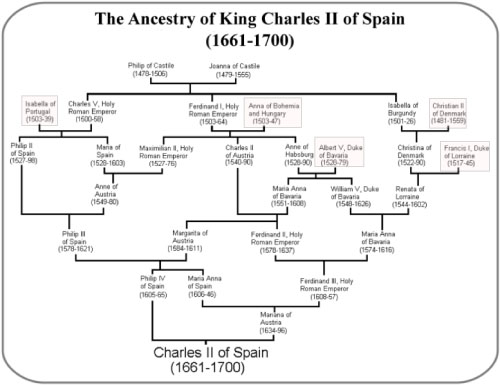Inbreeding of Spanish Royalty
| Tweet |
|
A genealogy study has been released examining the inbreeding of Spanish royalty during the Hapsburg dynasty. The Hapsburgs ruled Spain for 184 years until the death of King Charles II in 1700. Charles II was a physically and mentally impaired individual who was the product of generations of inbreeding. He was unable to produce offspring and thus effectively ended the dynasty.
All humans carry deleterious genes that under normal circumstances are recessive. These problem genes do not normally become dominant if unrelated people marry and have children. However, repeated consanguineous (related by blood) marriages within an extended family can concentrate deleterious genes with disastrous results. For a powerful royal family such as the Spanish Hapsburgs, inbreeding can impact not just the family, but history itself.
In the case of the Spanish Hapsburgs, they literally bred themselves out of existence. This is ironic given the reason the family married within their own ranks in the first place was to maintain power and control within the family. What the inbreeding eventually accomplished was to finally hand Spanish power over to the French Bourbons.
The amount of inbreeding within a family is measured by what is known as the inbreeding coefficient. This coefficient essentially sums up the various distinct genealogical paths to a common ancestor. The higher the inbreeding coefficient, the greater the risk of abnormal offspring.


